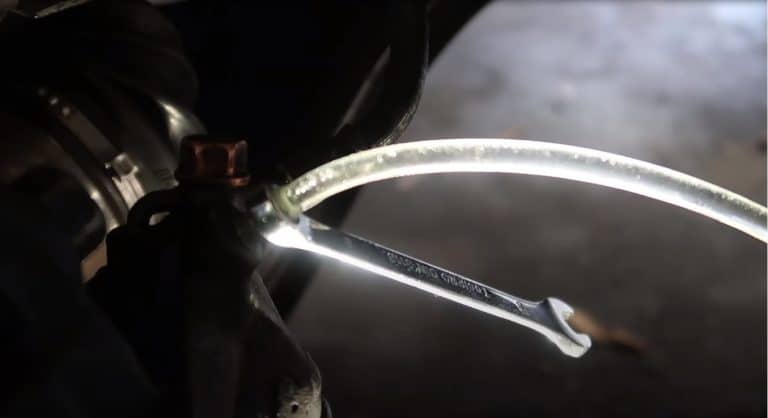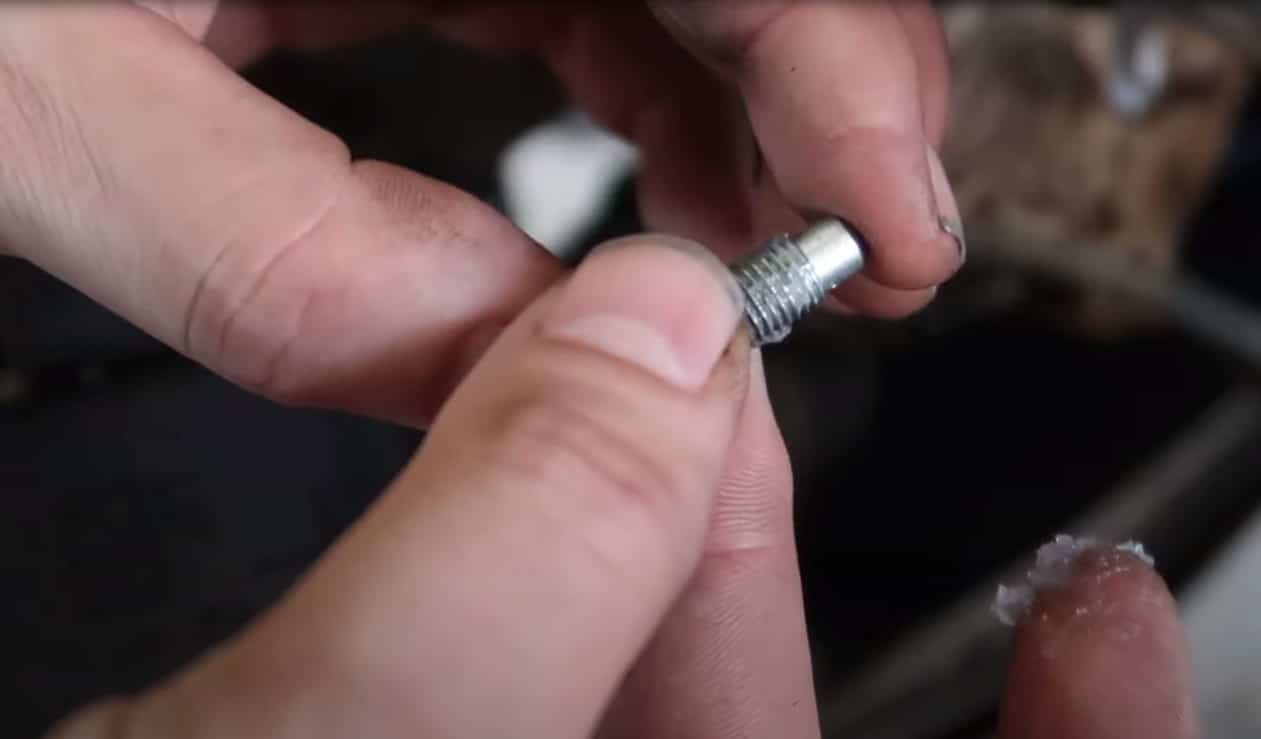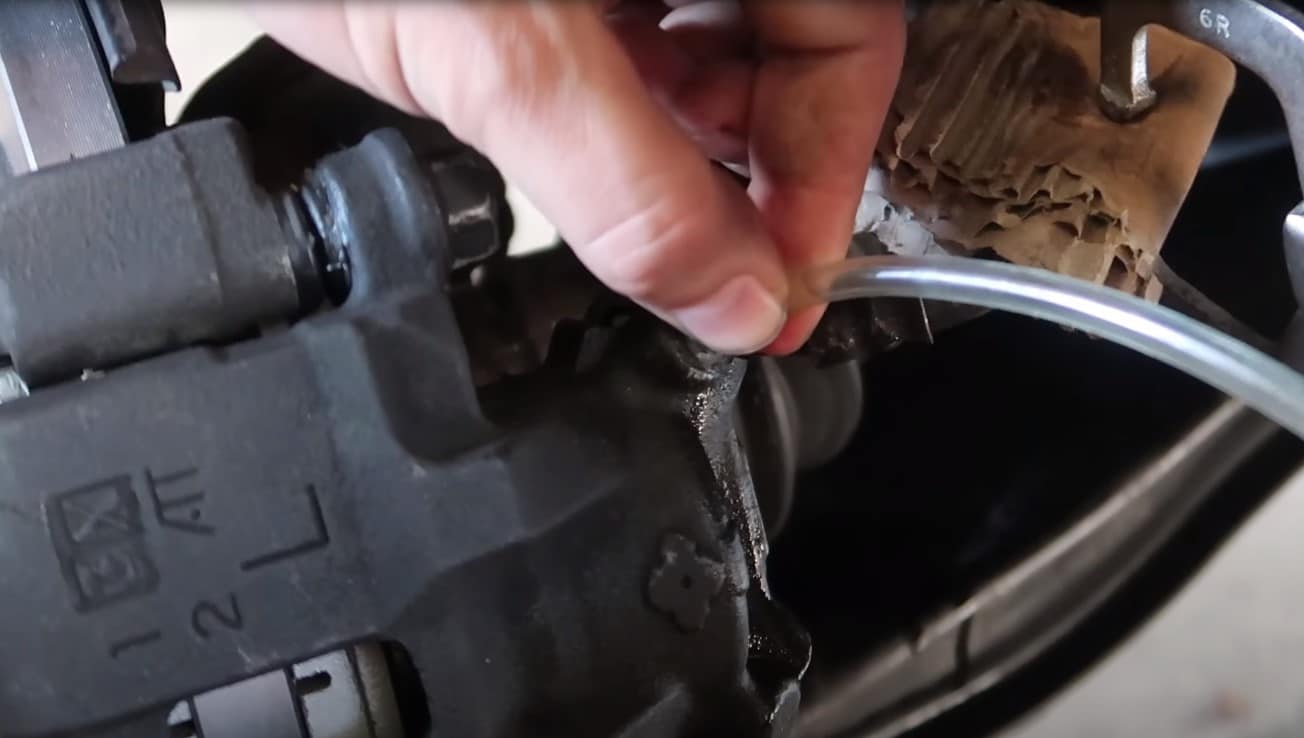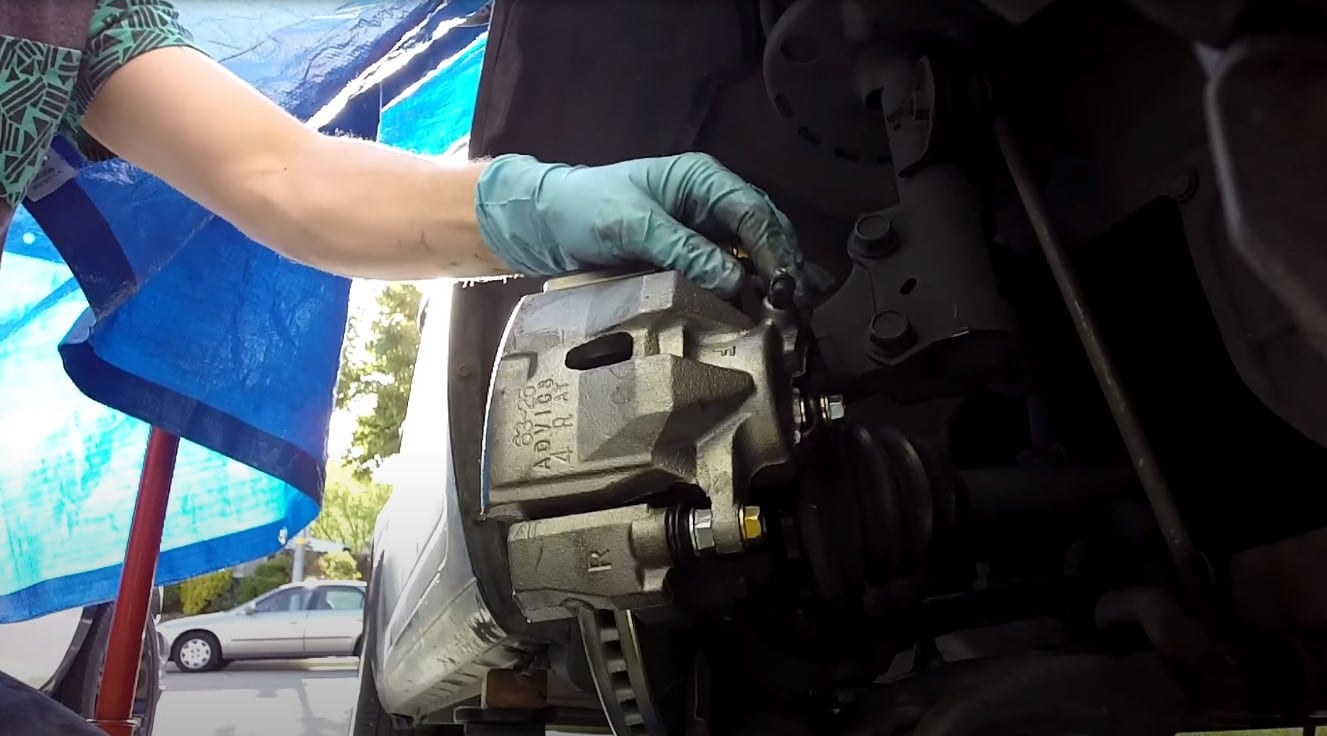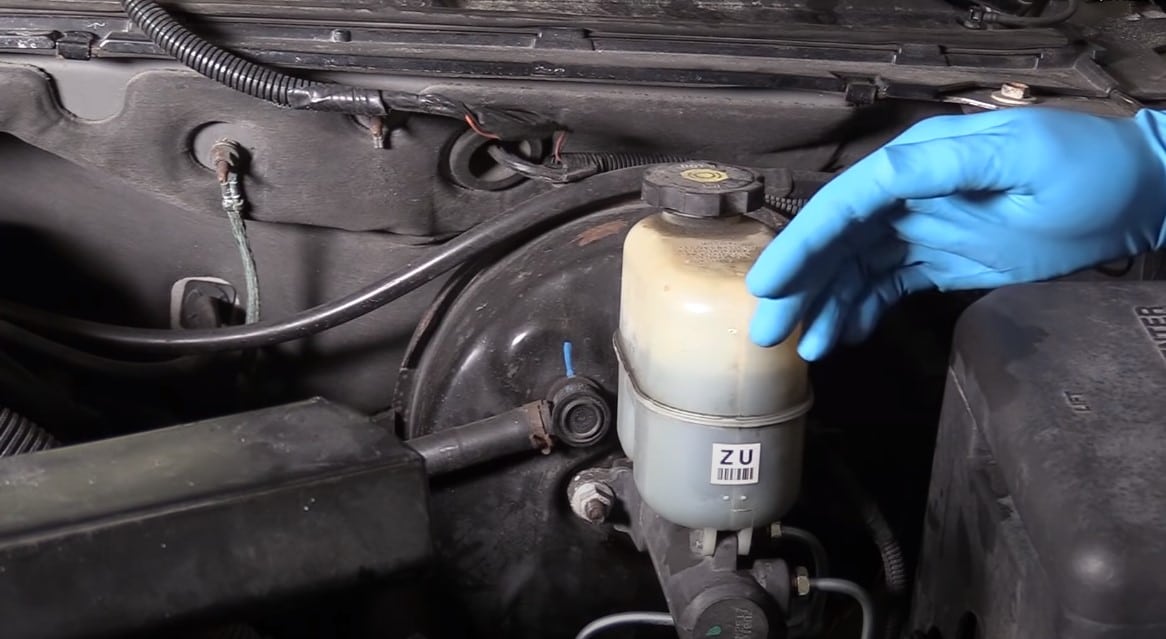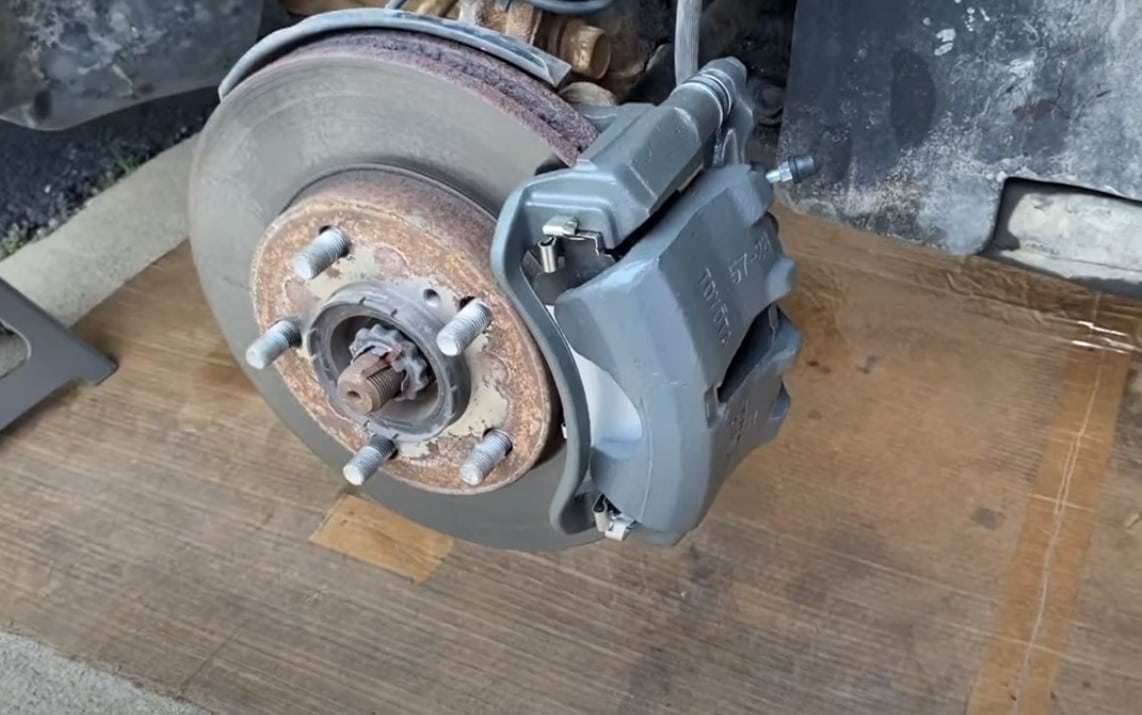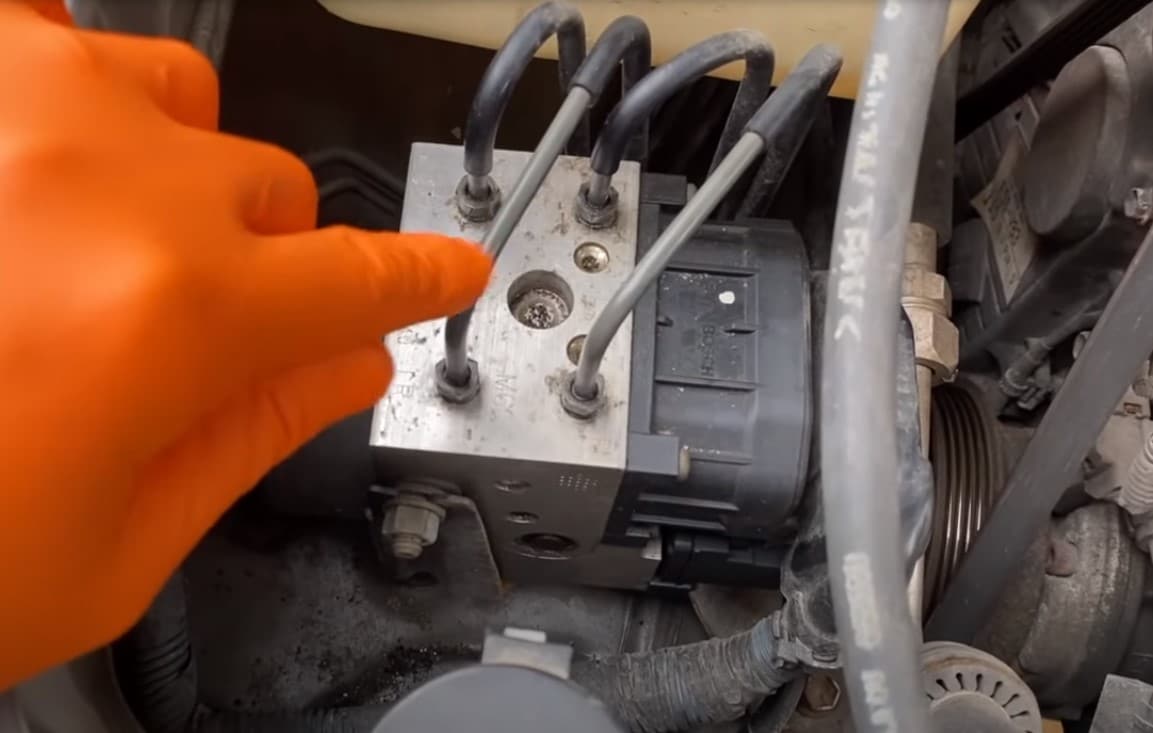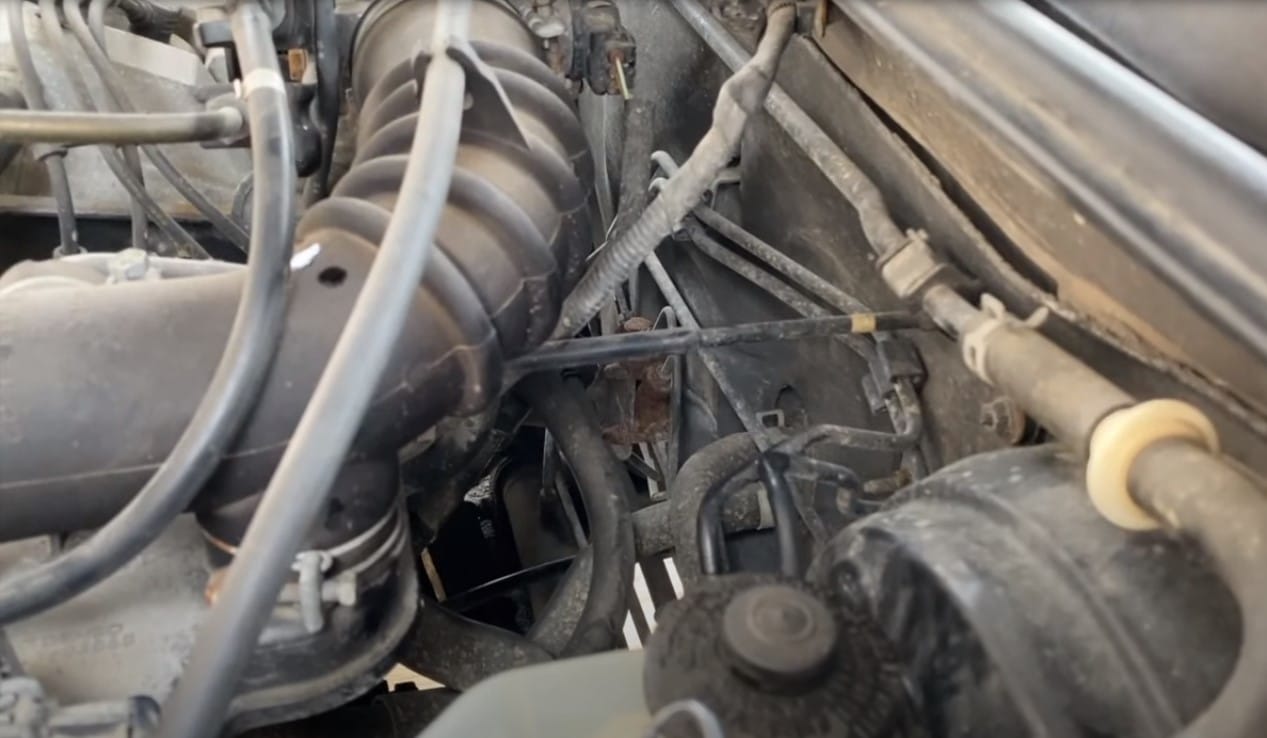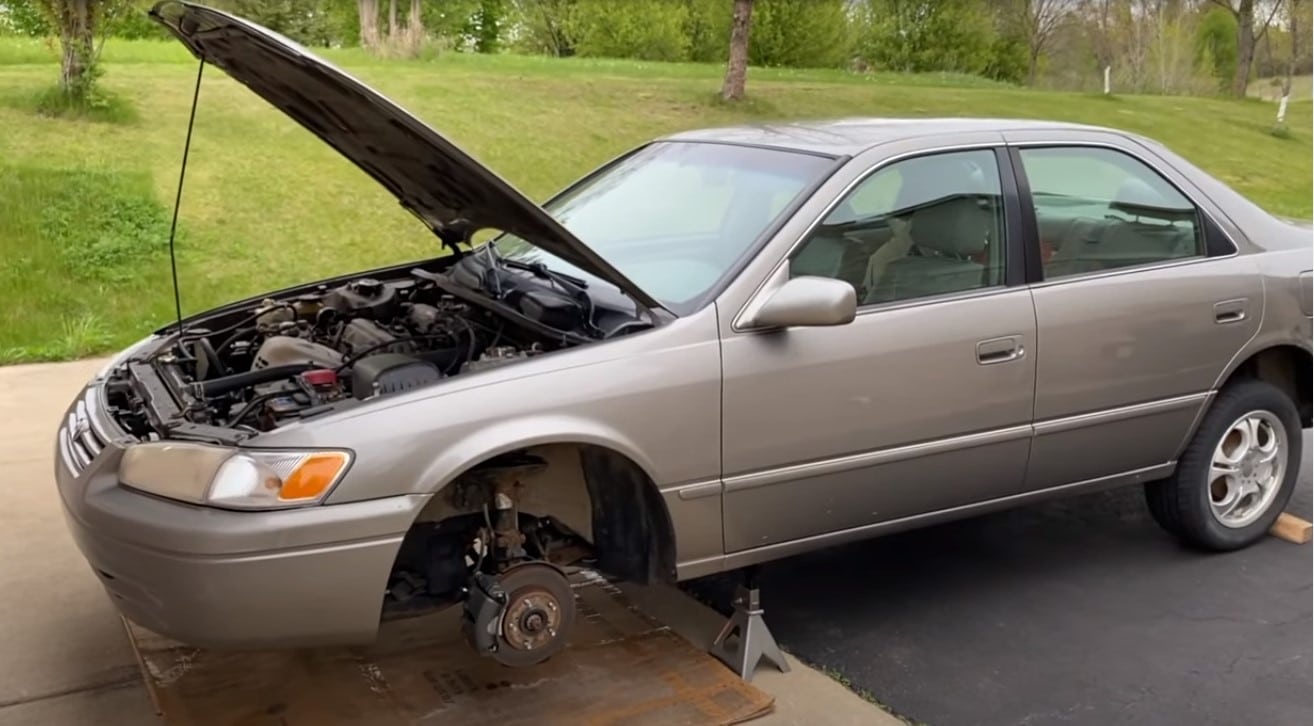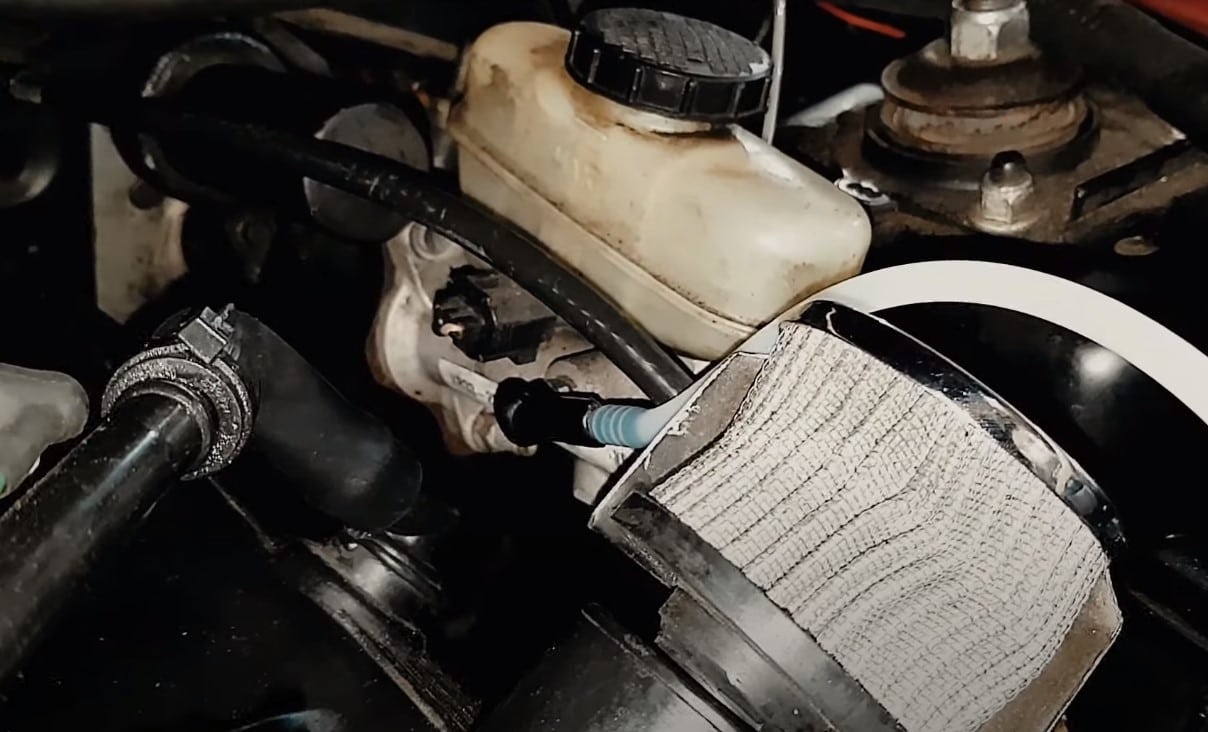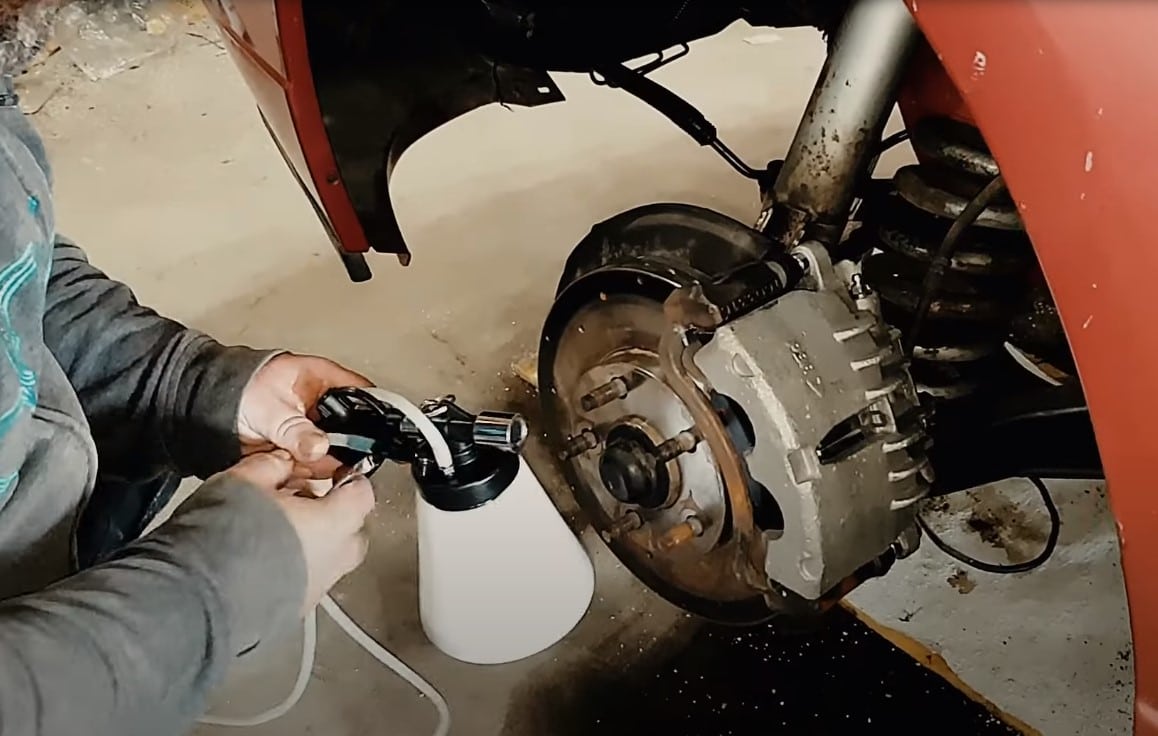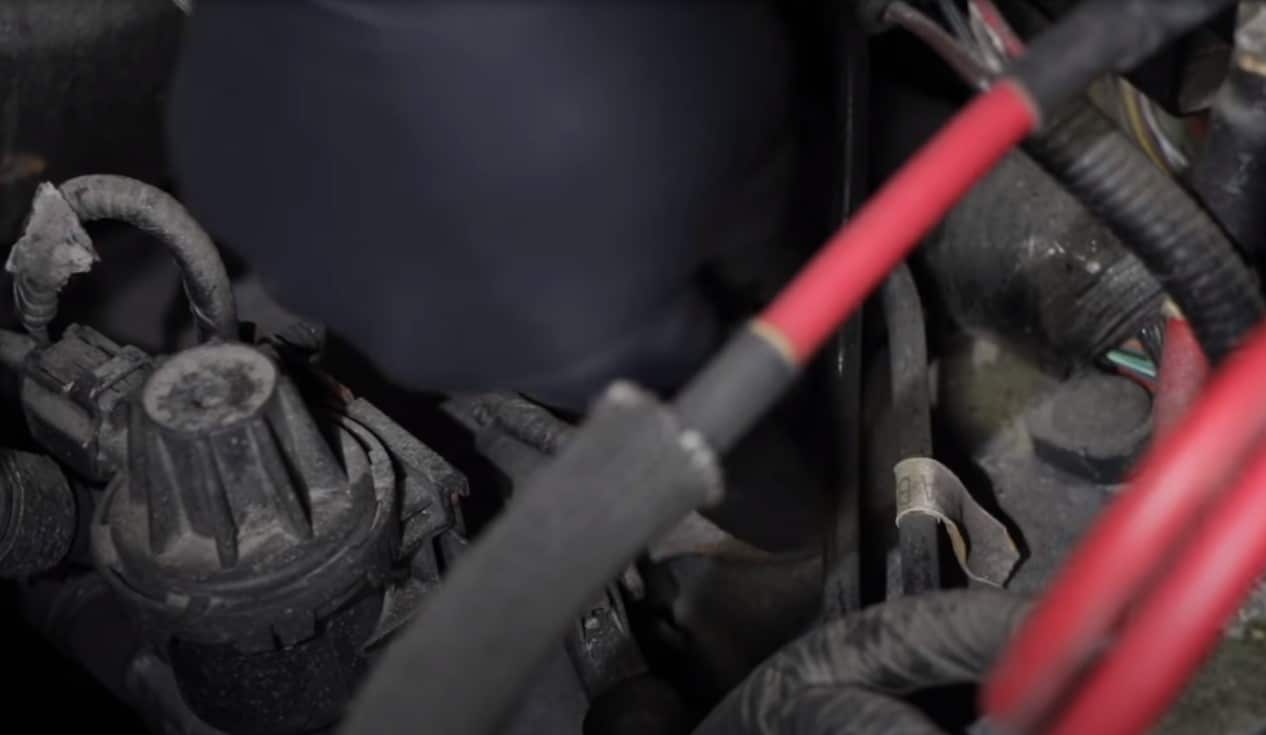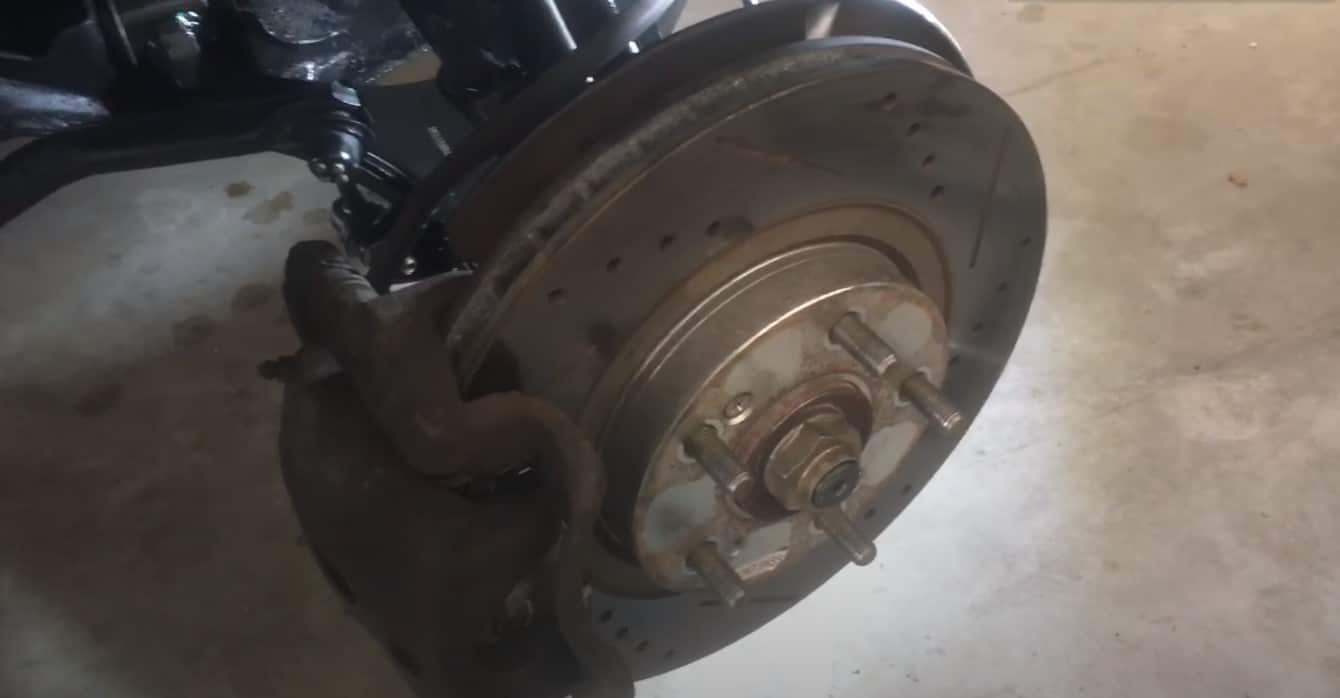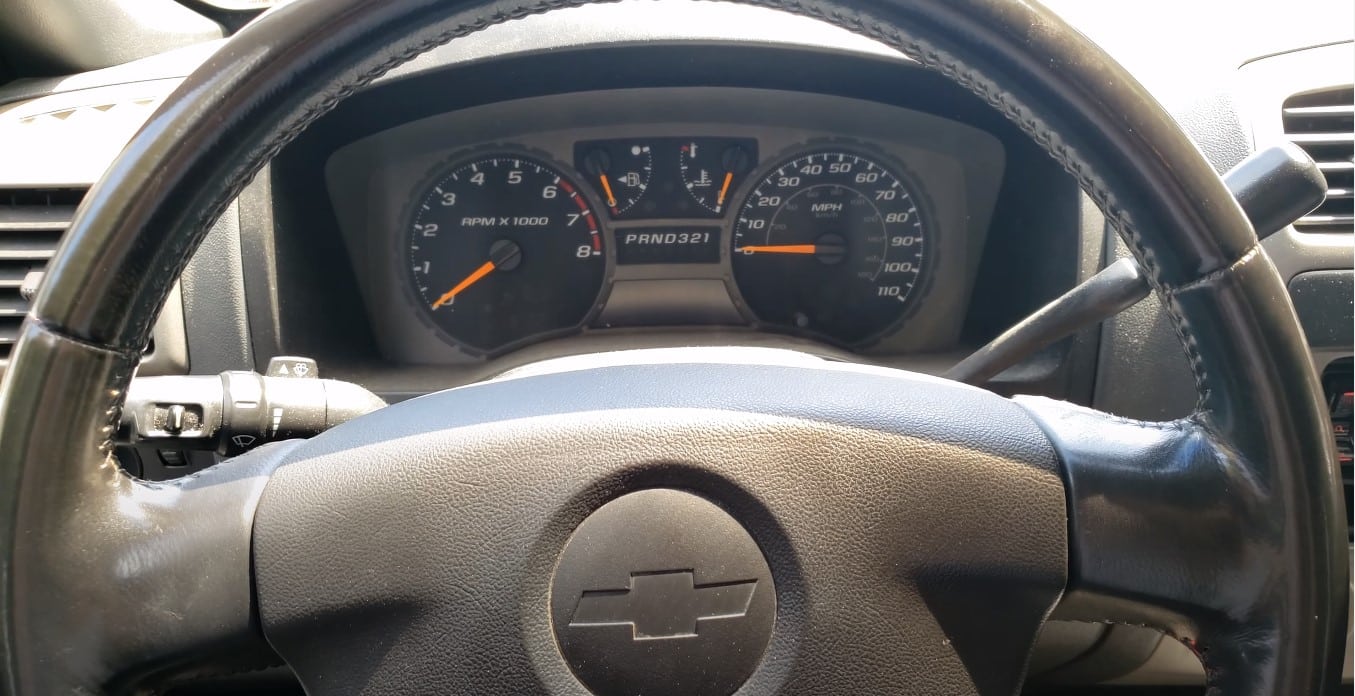How to Get Air out of Brake Lines without Bleeding—a question that plagues many car owners who are looking for an inexpensive and easy way to get the air out of their brake lines. The process can be intimidating, especially if you’re unfamiliar with the basics of automobile maintenance, but it doesn’t have to be.
In this guide, Rich’s auto body will walk you through the steps of removing air from your brake lines without having to bleed them. After reading this guide, you’ll be well on your way to a smoother braking experience.
If you’re experiencing problems with your brakes, it might be due to air in the brake lines. Brake lines that contain air can cause a soft or spongy feeling in the brake pedal, as well as reduced performance. Fortunately, getting air out of the brake lines without bleeding them is possible and is an inexpensive fix for this common problem.
What Is Air In Brake Lines?
Air in brake lines is compressed air bubbles that form in the brake system, causing brakes to malfunction and eventually resulting in no brakes at all. Air in the brake lines is usually caused by a leaky line, damage to the seal between the rubber hose and fitting, or an open-ended bleeder valve that lets out too much fluid.
Compressors and accumulators are two important components of a brake system that help maintain pressure in the airlines. If either is faulty, there is a risk of an air pocket forming. An air pocket can also form due to depression or suction inside the line, which occurs during normal rapid deceleration or quick stops.
A complete inspection of all brake lines should be done regularly as part of regular maintenance to ensure safety behind the wheel. If air is detected in the lines, then it’s time to start looking for a solution. Fortunately, removing air from brake lines without bleeding them is possible and relatively easy to do.
You can read more about “Why Does My Steering Wheel Shake?“
What Causes Air Bubbles In Your Brake Lines?
Have you ever gone to use your brakes and found that they feel spongy? This could be a sign of air bubbles trapped in your brake lines, leading to poor performance from your car’s braking system. The presence of air bubbles can cause lowered pressure and reduced pedal response, making stopping less efficient and potentially dangerous. Below, we’ll discuss what causes air bubbles in brake lines.
Pumping your brakes
Pumping your brakes can be one of the primary causes of air bubbles in your brake lines. Air bubbles, or air pockets, form when gas gets trapped between two points while the brake fluid is trying to flow through.
This can compromise the brake system’s ability to transfer pressure and prevent the vehicle from coming to a safe and timely stop. To help protect your brakes, it is best to avoid pumping them more than necessary.
Damaged brake lines
Brake lines that are worn, cracked, or otherwise damaged can cause leaks in your system. This will allow air to enter the line and form an air pocket. If you notice any signs of damage on your brake lines, it’s important to have them replaced immediately.
Low fluid levels
Low brake fluid levels can also cause air bubbles to form. If the brake reservoir isn’t full, then there is not enough pressure to keep the air out of the lines. It’s important to check your brake fluid levels regularly and top up as needed.
Poorly bled brakes
If you’ve recently had your brake system serviced and the brakes were not bled properly, then there is a good chance that air has gotten into the lines. It’s important to identify this issue quickly and make sure that the proper steps are taken to get rid of any trapped air.
Faulty vacuum booster
Finally, a faulty vacuum booster can also cause air bubbles to form in your lines. This is because the booster helps maintain pressure in the system and when it fails, air can get into the brake lines. If you suspect that there may be an issue with your vacuum booster, then it’s best to have it inspected by a professional.
Tools You Will Need When Get Air Out Of Brake Lines Without Bleeding
Are you a car enthusiast looking to save time and money while fixing up your car’s braking system? If so, getting air out of brake lines without bleeding can be a great way to keep your brakes functioning properly. But before you start this process, there are some essential tools that you will need to accomplish the task efficiently. Read on to discover all the necessary tools that’ll help make this job hassle-free!
Pliers
Pliers are essential when getting air out of brake lines without bleeding. With their long handles, you can easily grip and turn the various nuts and bolts that connect your brake lines to the other components. Pliers also come in a variety of shapes and sizes, so make sure to select the right ones for your particular job.
Standard screwdriver
A standard screwdriver is another essential tool when getting air out of brake lines without bleeding. With this item, you can easily remove the screws that attach your brake lines to other components and inspect the connections for any signs of air bubbles.
Brake fluid
You will also need some fresh brake fluid to replace any loss during the process. Make sure to use only the correct type of brake fluid as specified in your vehicle’s manual. This is because different kinds of brake fluid have different boiling points and can cause issues if they are not compatible with the rest of your system.
You may be also interested in “What Is The Color Of Brake Fluid?“
Needle nose pliers
Needle-nose pliers are also needed when getting air out of brake lines without bleeding. With these tools, you can easily reach into hard-to-reach areas and remove any trapped air bubbles. Make sure to wear protective gloves when using needle nose pliers as they may contain sharp edges.
Hydraulic jack or car lift for safety reasons
It is always best to use a hydraulic jack or car lift when getting air out of brake lines without bleeding. This will ensure that your vehicle is supported while you work, and reduce the risk of injury. Make sure to follow all safety instructions when using these tools as they can be dangerous if not handled correctly.
Paper towels or rags
Some paper towels or rags should be kept on hand when getting air out of brake lines without bleeding. These will come in handy for cleaning up spills and other messes caused by the process.
Locking pliers for bleed screws
It is important to have some locking pliers on hand when getting air out of brake lines without bleeding. These tools are essential for loosening and tightening the bleed screws on your brakes, as they provide extra grip and stability. Make sure to select locking pliers that fit your particular bleed screw size before beginning the job.
Proper car service tools
It is important to have the proper car service tools when getting air out of brake lines without bleeding. These include a torque wrench, voltmeter, and other specialized tools that will help ensure everything is installed correctly and safely. It’s best to consult your vehicle’s manual for exact specifications on these items.
A helper (optional)
Finally, if you’re feeling uncertain about tackling this task alone, then it’s always a good idea to have a helper with you. This person can spot any potential issues you may miss and provide guidance when needed. Plus, having someone around will make the job more fun!
Now that you know all the necessary tools for getting air out of brake lines without bleeding, it’s time to get started. Be sure to read your vehicle’s manual thoroughly before beginning and always wear protective gear when working with any of these items.
How to Get Air Out of Brake Lines Without Bleeding? Step-by-step
Are you trying to get the air out of your brake lines without the hassle of bleeding them manually? This is a common problem and can be tricky and time-consuming if not done correctly. If so, then you’ll want to read this post! From easy-to-follow step-by-step tutorials to general tips on how to ensure that there’s no more air left in the system after flushing — it’s all here! Keep reading for our best advice on efficiently ridding any unwanted bubbles from your system!
Step 1: Gather the necessary tools
The first step in getting air out of brake lines without bleeding is to gather the necessary tools. This includes a hydraulic jack or car lift, needle nose pliers, fresh brake fluid, paper towels or rags, locking pliers for bleed screws, and proper car service tools.
Step 2: Inspect connections
Once you have all the required tools, you’ll want to inspect all the connections in your brake system. Look for any loose or damaged parts that could be causing air bubbles. If everything looks good, then you can move on to the next step.
Step 3: Flush out the old fluid
The next step is to flush out any old brake fluid from the system. This is done by using the hydraulic jack or car lift to push out the old fluid. Make sure that you replace it with fresh brake fluid and double-check for any air bubbles.
Step 4: Check for trapped air
Once the new fluid has been added, you’ll need to check for any trapped air bubbles in hard-to-reach areas. To do this, you’ll need to use the needle nose pliers to reach into the tight spaces. If any air bubbles are present, simply push them out with the pliers and re-check for more.
Read more: Clicking Noise From Front Wheel When Driving
Step 5: Tighten bleed screws
The last step is to tighten all of the bleed screws in the system. Use the locking pliers for extra grip and stability, then check them once more with a torque wrench to ensure they are secured properly.
With these steps complete, you should now have an air-free brake system! Be sure to keep your car service tools handy and always follow the manufacturer’s instructions when performing any kind of maintenance on your vehicle. Doing so will help ensure that your brakes remain in top condition for years to come.
Why do you need to remove air from your brake lines?
Removing air from your brake lines is essential to maintaining the efficacy of your vehicle’s braking system. If there is an accumulation of air in the brakes, it can result in reduced responsiveness and a decreased level of stopping power due to uneven pressure distribution. Furthermore, air bubbles within the brake line can cause spongy brake pedal action and can impede the transmission of braking force from the master cylinder to the brakes.
In some cases, excessive amounts of air can even cause a complete loss of stopping power if not addressed. For this reason, it is highly recommended to regularly inspect your brakes and flush out any air bubbles that may have accumulated in the lines. Doing so will help keep your vehicle safe and functioning properly.
Advantages of getting air out of brake lines
Are you experiencing issues with your vehicle’s braking system, such as a delay in your brakes responding or unresponsive brakes? If so, then it may be due to an issue with the brake lines. Specifically, your brake lines could have too much air pressure built up inside them and need to be bled out. Bleeding out the brake lines requires special tools and specialized knowledge of how the process works. However, there are numerous advantages to doing this for both amateurs and experienced automotive enthusiasts alike. Below, we will explore the many benefits that come from properly bleeding out brake lines.
Increased Braking Power
One of the primary benefits of bleeding out brake lines is that it will increase your vehicle’s braking power. By removing any trapped air bubbles in the brake lines, you can ensure that there is a consistent level of pressure being applied to the brakes with each press of the pedal. This results in faster and more powerful braking capabilities, making it easier to stop your vehicle in emergency situations.
Reduced Delay Time
Air bubbles can cause a delay in the time it takes for your brakes to respond when the pedal is pressed. As mentioned above, this can be extremely dangerous in certain scenarios. By removing any trapped air from the brake lines, you’ll experience quicker response times when you press the brake pedal.
Improved Pedal Feel
Another advantage of getting air out of your brake lines is that it will improve the feel of your brake pedal. This means that when you press on the brakes, there won’t be any spongy sensation or uneven pressure distribution. Instead, you’ll experience a nice solid, and consistent feel. This can help make your driving experience much more enjoyable and comfortable.
Increased Safety
Finally, removing any traces of air in the brake lines will help to increase your overall safety while driving. As mentioned earlier, trapped air bubbles can cause a decrease in braking power and an increased response time, both of which could be dangerous if you ever find yourself in an emergency situation. By regularly bleeding out the brake lines, you can help ensure that your brakes remain responsive and powerful no matter what the driving conditions are.
In conclusion, it is essential to bleed out any air bubbles that may have accumulated in your brake lines. Not only will this increase your vehicle’s braking power, but it can also help to reduce the delay time of your brakes, improve the feel of the pedal, and increase your overall safety while driving. So make sure to inspect your brakes regularly and keep them in top condition with regular brake line bleeds!
How long does it take to get the air out of the brake lines?
The length of time it takes to get the air out of the brake lines can vary depending on the system design and experience level of the technician performing the work. An experienced individual can have a significant impact, as they will be familiar with how to quickly and accurately bleed brake.
Generally, it can take anywhere from 45 minutes to an hour or two to ensure all air is removed from the lines. If you’ve had any sort of modifications made to your vehicle since its original installation, this process may take longer due to any additional parts required for proper bleeding.
Additionally, if the brake system has not been serviced in a while, there may be more air in the system, and will thus take longer to remove. Regardless of the length of time, it takes to get all air out of your brake lines, it is important that you properly water bleed any new brake installations or modifications for maximum performance and safety.
How Much Brake Fluid Will I Need To Replace?
It depends on the make and model of your car, but typically you’ll need about 32 ounces of brake fluid. Be sure to check your owner’s manual for the recommended type of brake fluid and the amount required.
The amount of brake fluid you will need to replace depends on the size and design of your braking system. Generally, a full bleed job usually requires about one liter of new brake fluid for every four corners (front brakes and rear brakes). However, some vehicles may require more or less depending on their specific design and layout.
It is important to use the correct type of brake fluid for your vehicle and never mix different types. Using the wrong type of brake fluid can damage your braking system and cause unnecessary wear and tear on your brakes.
Be sure to consult a professional mechanic or owner’s manual in order to determine which type of brake fluid is best suited for your vehicle. Additionally, if you are having any major repairs or modifications done to your braking system, it is always best to replace the entire system with all new components.
How do you tell if there is air in the brake line?
The most common way to tell if there is air in the brake line is by feeling a spongy or mushy sensation when pressing on the brake pedal. Another indication of air present in the lines is decreased braking power and an increased amount of time for your vehicle to come to a complete stop.
You can also look for any visible signs of air bubbles in the brake lines or fluid reservoir. If you suspect that you have air trapped in your brake lines, it is important to have them bled out as soon as possible for optimal braking performance and safety.
In some cases, a diagnostic scan may be necessary to identify any potential issues with the brakes, such as a blockage or air trapped in the lines. Consulting a professional mechanic for a full inspection and diagnosis can help you determine the cause of any braking issues and ensure your vehicle is safe to drive.
What Can You Do To Prevent Air Bubbles In Your Brake Lines?
Preventing air bubbles in brake lines is essential for the proper functioning of any vehicle. Taking certain measures can help keep these bubbles away and keep your brakes functioning optimally.
To begin, periodically inspect all brake lines, hoses, and connections for leaks or damage and replace them as soon as they are noticed. Additionally, it is important to regularly check the contents of the fluid reservoir and fluid level to ensure that there is enough quality fluid to properly operate your brakes.
Finally, if replacing or installing new brake lines, it is highly recommended that a pressurized bleeder be used with a specialized vacuum pump which will effectively remove any air bubbles present in the system prior to installation.
Following these steps can help prevent air bubbles in your brake lines keeping you and your vehicle safe on the road!
What happens if you don’t bleed the brakes correctly?
If brakes are not bled correctly, it can lead to decreased braking performance and even complete failure of the braking system. This can be a dangerous situation, as it can result in loss of control or an accident.
Additionally, if the air is trapped in the brake lines, it can cause corrosion or damage to the internal components of the brake system, leading to costly repairs or replacements. It is important to properly bleed brakes any time brakes are serviced or replaced in order to ensure maximum performance and safety.
Failure to appropriately water bleed your brakes can also lead to brake fade, which occurs when too much heat has been generated by the braking system and causes it to become less responsive and effective. This can be a serious problem and should not be taken lightly. Proper maintenance of your brakes is the only way to ensure they remain in optimal working condition.
What happens if you drive with air in the brake lines?
Driving with air in the brake lines is incredibly dangerous and can cause serious damage to vehicle components. The air reduces stopping power and makes it difficult to bring the car to a complete stop. This can worsen particularly in slippery or wet road conditions, making it extremely risky for both the driver and other vehicles on the road.
Even more seriously, the accumulated brake pressure buildup can cause a rupture of the steel brake pipes, rendering them completely useless and resulting in uncontrolled braking. It’s important to perform regular inspections of your brakes, as well as complete annual brake fluid changes and bleeding of the system according to manufacturer specifications, for optimal safety and performance.
FAQs about Get Air Out of Brake Lines Without Bleeding
Why are my brakes still spongy after bleeding?
Spongy brakes are usually caused by air trapped in the brake lines or a faulty master cylinder. Check to make sure all of the air has been completely bled out of the system and that there is no visible damage to any of the components, and then have a professional mechanic inspect your brakes for any additional signs of wear and tear.
How do I know if there is air in my brakes?
Air trapped in the brake lines can cause a spongy or mushy feeling when pressing down on the pedal, as well as decreased braking power and an extended amount of time for your car to come to a complete stop. If you suspect that your brakes may have air in them, it is important to have them bled out and inspected by a professional mechanic as soon as possible.
Is it dangerous to drive with air in brake lines?
Driving with air in the brake lines can be extremely dangerous and should never be done. It reduces stopping power and makes it difficult to bring the car to a complete stop, increasing the risk of an accident. Additionally, it can lead to brake fade, corrosion, or damage to internal components and even a rupture of the steel brake pipes in some cases.
Can Low brake fluid cause spongy brakes?
Yes, low brake fluid levels can cause the brakes to feel spongy and decrease their overall performance. Make sure your car’s brake fluid is regularly checked and topped off as needed in order to ensure optimal safety and performance. Additionally, make sure you consult a professional mechanic for regular maintenance of your braking system.
Will Air in Brake Lines Go Away?
No, air trapped in brake lines will not go away on its own and needs to be bled out of the system. It is important to properly bleed brakes any time brakes are serviced or replaced in order to prevent issues with sponginess, loss of control, and other potentially dangerous consequences.
Do I need to bleed all 4 brakes?
Yes, all four brakes should be bled to ensure even pressure is applied to all four wheels. This will help your car stop more quickly and evenly and maintain optimal performance and safety.
How often should brakes be bled?
It is recommended to bleed your brakes every 12 months or 12,000 miles in order to maintain proper braking performance and safety. Additionally, if you experience any issues such as spongy brakes or decreased stopping power it may be necessary to have them bled out sooner. Make sure to consult a professional mechanic for advice on when to bleed your brakes and for a proper inspection of the braking system.
Conclusion for How to Get Air Out of Brake Lines Without Bleeding?
How to Get Air Out of Brake Lines Without Bleeding is a crucial process for the safety and performance of your vehicle. If you have any issues with sponginess or decreased stopping power, it is important to have your brakes bled in order to eliminate air from the brake lines.
Bleeding your brakes is a messy and exasperating process, but it doesn’t have to be. If you find yourself needing to get air out of your brake lines, use this tried-and-true method from professionals. By following these easy steps, you’ll have working brakes in no time – with none of the headaches. And be sure to share this post with any friends or neighbors who might need it.
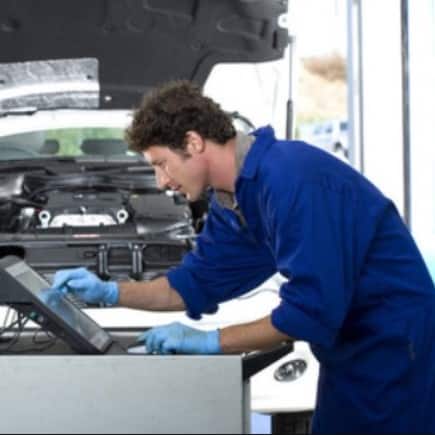
William Moore is an automotive specialist with two decades of experience, ready to give your car the care it needs. He understands all facets of auto maintenance and repair, from oil changes to brake jobs. Working with the latest tools and technologies, he provides complete service on all makes and models of cars. With his attention to detail and commitment to quality workmanship, you can expect excellent results.
